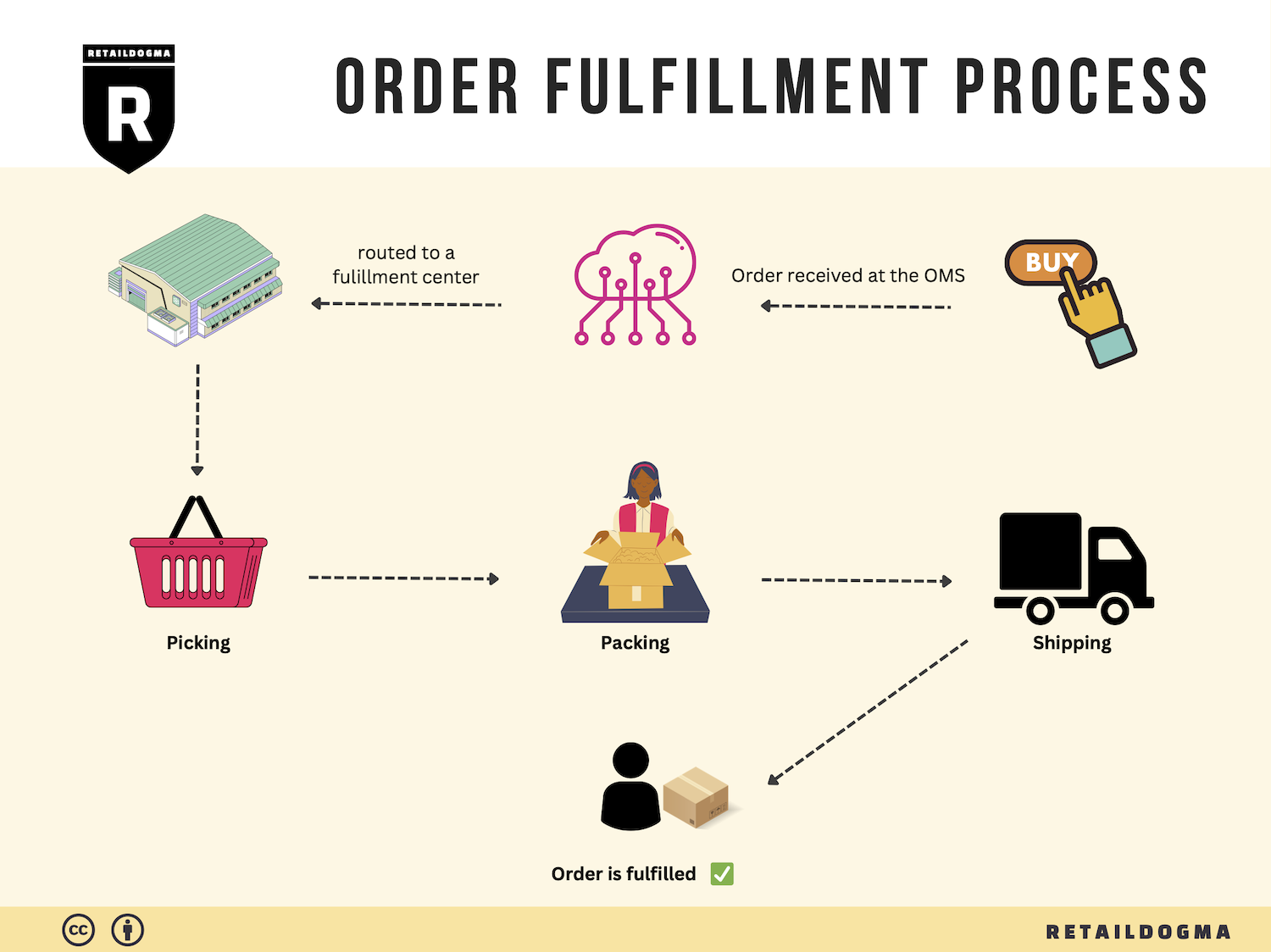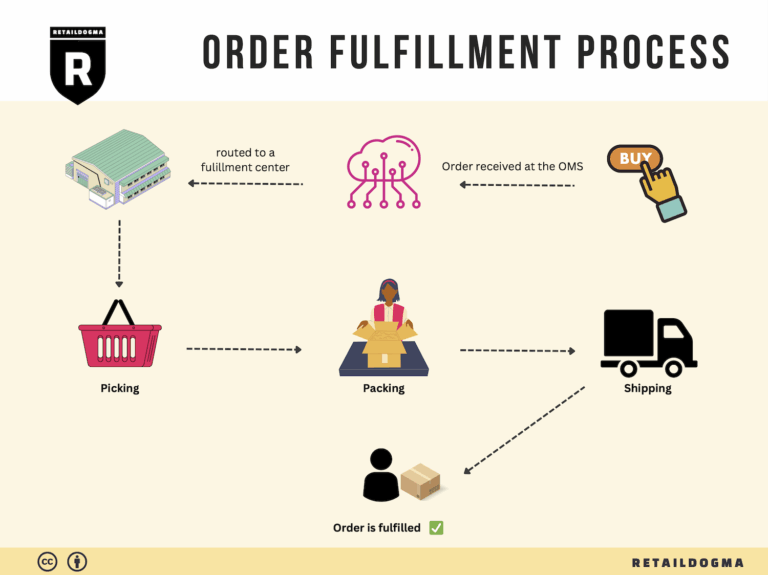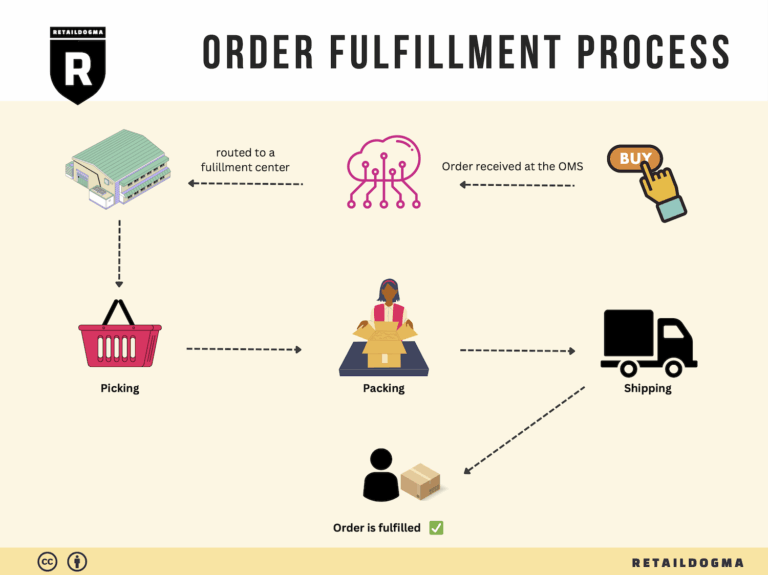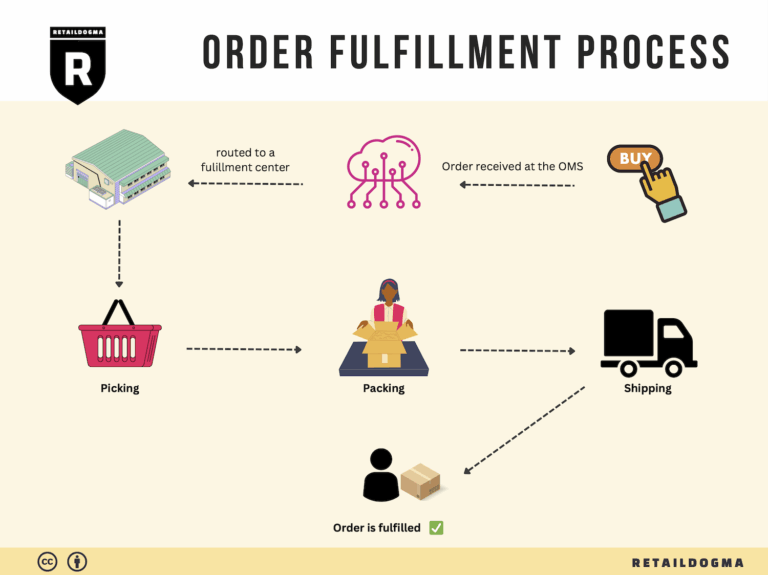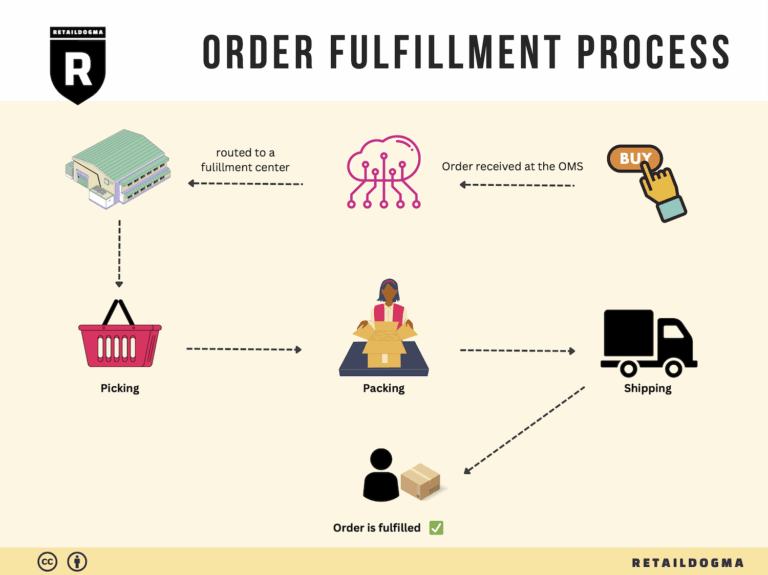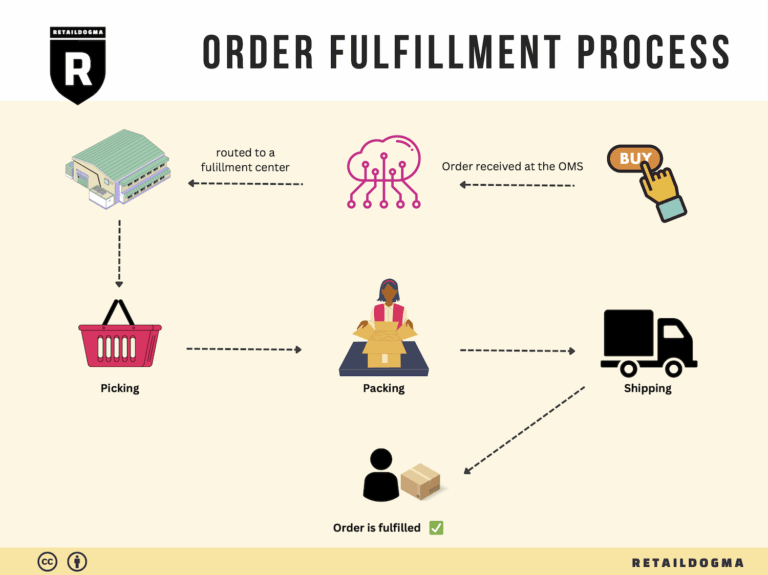How Order Fulfillment Works: A Step-by-Step Guide for Businesses
What is E-commerce Fulfillment? An Introduction for Growing Businesses
Understanding E-commerce Fulfillment
As your online business begins to flourish, you may find yourself facing an increasingly common challenge: the daunting task of packing and shipping orders. The excitement of growing sales can quickly turn into stress as you juggle inventory management, packing requirements, and shipping logistics. This is where e-commerce fulfillment comes into play. At its core, fulfillment is the process of getting a product from your warehouse or supplier to your customer’s doorstep. It encompasses everything from receiving inventory and processing orders to packing and shipping products efficiently.
In this guide, we will explore the various fulfillment models available to e-commerce businesses, focusing on popular options such as Third-Party Logistics (3PL) providers and Fulfillment by Amazon (FBA). Each model offers unique advantages and can significantly impact your operational efficiency and customer satisfaction.
Key Components of Fulfillment
We will delve into the core services that fulfillment partners typically offer, including inventory management, order processing, packaging, shipping, and returns handling. Understanding these services will help you recognize what to expect from a fulfillment partner and how they can support your business’s growth.
Choosing the Right Partner
Selecting the right fulfillment partner is crucial for maintaining a seamless operation. This guide will provide insights into what factors to consider when evaluating potential partners, such as location, technology capabilities, scalability, and customer service. We will also discuss the importance of aligning your business goals with your partner’s strengths.
Pricing Considerations
Cost is a significant factor when it comes to fulfillment. We will break down the pricing structures associated with different fulfillment models, helping you to understand how to budget for these services effectively. From per-order fees to storage costs, having a clear grasp of potential expenses will enable you to make informed decisions.
Empowering Smart Logistics Decisions
Ultimately, the goal of this guide is to empower you, the business owner or operations manager, to make smart, strategic decisions about your logistics. With the right knowledge and resources, you can streamline your fulfillment processes, enhance customer experiences, and set your business up for sustainable growth. Join us as we navigate the complexities of e-commerce fulfillment and uncover the best practices for your growing business.
What You’ll Learn In This Guide
- What is E-commerce Fulfillment? An Introduction for Growing Businesses
- The Order Fulfillment Process: From ‘Buy’ Button to Customer’s Door
- Comparing Fulfillment Models: In-House vs. 3PL vs. Dropshipping
- A Deep Dive into Amazon FBA: Pros, Cons, and Who It’s For
- Core Services Offered by Fulfillment Centers
- How to Choose a Fulfillment Partner: A 6-Point Checklist
- Understanding Fulfillment Pricing: A Breakdown of Common Fees
- Frequently Asked Questions (FAQs) about Fulfillment
- Conclusion: Is Outsourcing Fulfillment the Right Move for Your Business?
- Important Disclaimer
The Order Fulfillment Process: From ‘Buy’ Button to Customer’s Door
1. Receiving Inventory
The order fulfillment process begins with receiving inventory. This step involves the acceptance of products from suppliers into the fulfillment center. When products arrive, they must be checked against purchase orders to ensure accuracy in terms of quantity, type, and condition. This process typically involves scanning items with a barcode scanner to register them into the inventory management system, which assigns a unique Stock Keeping Unit (SKU) to each product.
Importance: Properly receiving inventory is crucial as it sets the foundation for efficient operations. Any discrepancies at this stage can lead to stockouts or overstock situations, which can disrupt sales and customer satisfaction. By maintaining accurate records from the start, businesses can better manage their inventory levels and reduce costs associated with errors.
2. Warehouse Storage
After receiving inventory, the next step is warehouse storage. This involves organizing products within the fulfillment center for easy access and efficient retrieval. Items are typically stored in designated locations based on their SKU, size, and demand. Modern fulfillment centers, like Amazon’s PDX8, utilize advanced automation and robotics to optimize storage space and improve retrieval times.
Importance: Effective warehouse storage minimizes the time it takes to locate products when orders are placed. It also maximizes the use of available space, which is particularly important in large facilities. A well-organized warehouse can lead to faster order processing, reduced labor costs, and improved overall efficiency.
3. Order Picking
Once an order is placed by a customer, the fulfillment process moves to order picking. This step involves retrieving the items from storage locations based on a pick list generated by the inventory management system. A pick list outlines the SKUs, quantities, and storage locations of the items to be picked. Workers or robots then navigate the warehouse to collect these items.
Importance: Order picking is a critical step that directly impacts delivery speed and accuracy. Efficient picking processes can significantly reduce the time taken to fulfill orders, leading to quicker shipping and happier customers. Moreover, the accuracy of picking is essential; errors can lead to returns, customer dissatisfaction, and increased operational costs.
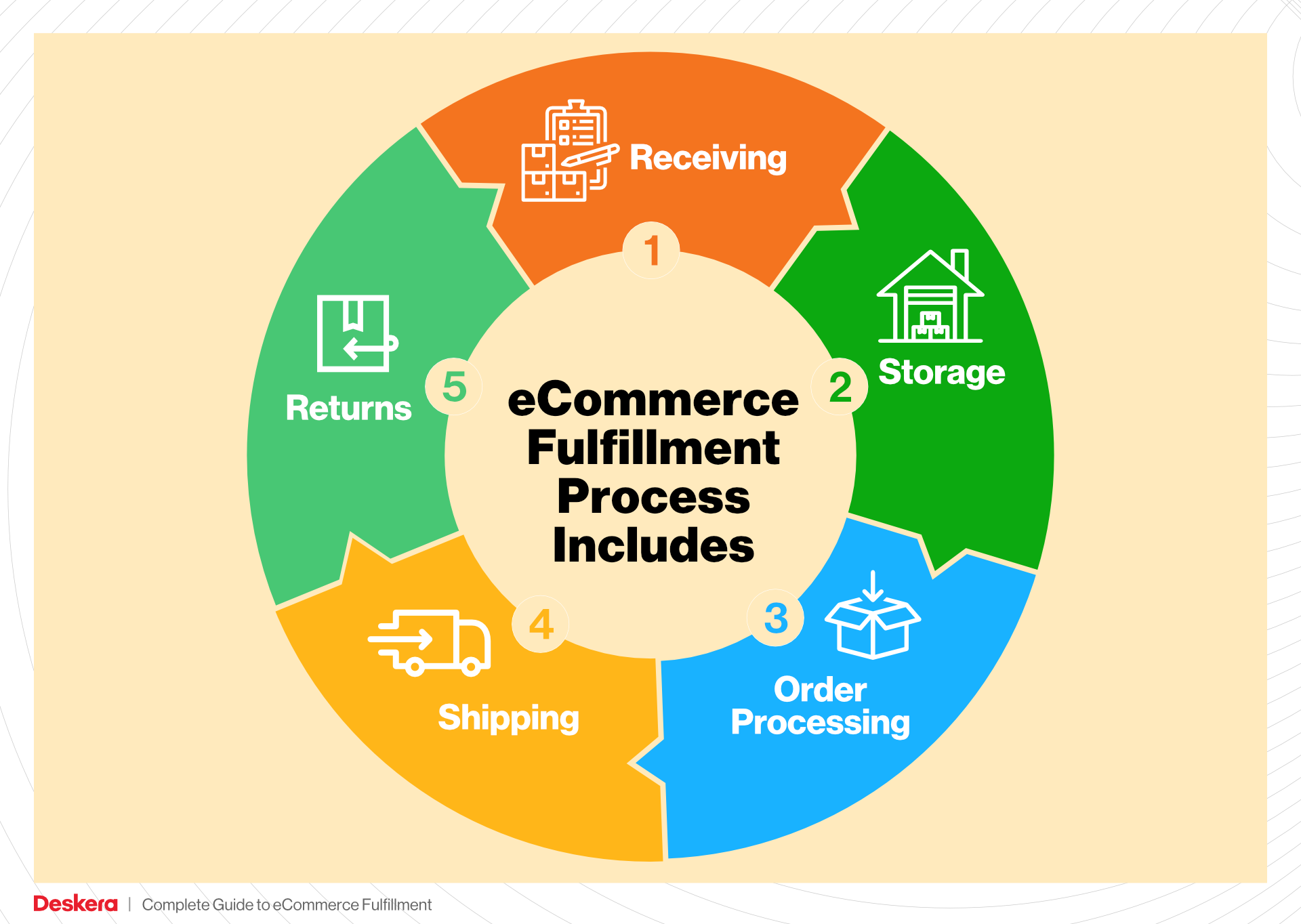
4. Order Packing
After the items are picked, they move to the order packing stage. In this step, products are carefully packed into boxes or envelopes for shipping. This involves selecting appropriate packaging materials to protect the items during transit and ensuring that they are labeled correctly with shipping information and tracking numbers.
Importance: Proper packing not only ensures that products arrive safely at the customer’s doorstep but also reflects the brand’s professionalism. Efficient packing processes can reduce shipping costs and minimize the chances of damage or loss during transit. Additionally, effective use of packaging can enhance the customer experience, contributing to repeat business and positive reviews.
5. Shipping & Delivery
The final step in the order fulfillment process is shipping and delivery. Once packed, orders are handed over to shipping carriers for transportation to the customer. This may involve choosing the best shipping method based on speed, cost, and destination. Tracking information is typically provided to the customer so they can monitor their package’s journey.
Importance: The shipping and delivery stage is crucial as it represents the final touchpoint with the customer. Fast and reliable delivery can significantly enhance customer satisfaction and loyalty. In today’s competitive e-commerce landscape, businesses must strive to meet or exceed customer expectations for delivery times. Leveraging local fulfillment centers like Amazon’s PDX8 can provide a strategic advantage by reducing shipping times across vast regions.
In summary, the order fulfillment process is a multi-step operation that requires attention to detail and efficiency at every stage. By understanding and optimizing each of these steps—receiving inventory, warehouse storage, order picking, order packing, and shipping & delivery—e-commerce businesses can scale their operations effectively and enhance customer satisfaction.
Comparing Fulfillment Models: In-House vs. 3PL vs. Dropshipping
Comparison of Fulfillment Models
| Model | Who Handles Inventory | Best For (Business Stage) | Key Advantage | Key Disadvantage |
|---|---|---|---|---|
| In-House Fulfillment | Business Owner | Established Businesses | Complete control over inventory and processes | High overhead costs and resource-intensive |
| Third-Party Logistics (3PL) | Third-Party Logistics Provider | Startups to Mid-Sized Businesses | Scalability and flexibility | Less control over inventory and processes |
| Dropshipping | Supplier | New and Small Businesses | Low startup costs and minimal risk | Lower profit margins and reliance on suppliers |
In-House Fulfillment
In-house fulfillment refers to the process where a business manages its own inventory, storage, packing, and shipping operations. This model gives businesses complete control over their inventory and fulfillment processes, allowing for tailored customer experiences and the ability to implement specific quality control measures. This is particularly advantageous for established businesses that have the resources and volume to justify the investment in warehousing, staff, and logistics technology. However, the downside is that it can be resource-intensive, requiring significant overhead costs related to labor, warehousing, and technology investments. Additionally, scaling operations can become cumbersome, as businesses must continually manage and adapt their fulfillment processes to meet increasing demand.
Third-Party Logistics (3PL)
Third-party logistics (3PL) involves outsourcing fulfillment operations to a specialized logistics provider. This model is ideal for startups and mid-sized businesses that may not have the capital or expertise to manage fulfillment in-house. 3PL providers handle everything from inventory storage to packing and shipping, allowing businesses to focus on core competencies like marketing and product development. One of the key advantages of using a 3PL is scalability; as a business grows, it can easily adjust its logistics needs without the burden of managing additional infrastructure. However, the primary disadvantage is the loss of direct control over inventory and fulfillment processes, which can lead to issues with quality and customer service if the 3PL does not meet the expected standards.
Dropshipping
Dropshipping is a fulfillment model where a business sells products without holding inventory. Instead, when a customer places an order, the business purchases the item from a third-party supplier who then ships it directly to the customer. This model is particularly appealing for new and small businesses as it requires minimal startup costs and significantly reduces the risk associated with unsold inventory. The key advantage of dropshipping is its low barrier to entry; entrepreneurs can start selling online without the need for significant investment in inventory or warehousing. However, dropshipping also comes with notable drawbacks, such as lower profit margins due to reliance on suppliers and potential issues with inventory management, as businesses have less control over product availability and shipping times. Additionally, the quality of customer service can suffer if suppliers do not meet delivery expectations, leading to potential dissatisfaction among customers.
Conclusion
Choosing the right fulfillment model is crucial for scaling an e-commerce business. Each model presents unique advantages and disadvantages, and the best choice often depends on the specific needs, resources, and stage of the business. Established businesses may benefit from the control offered by in-house fulfillment, while startups might find that 3PL or dropshipping aligns better with their operational capabilities and growth strategies. Understanding the nuances of each model can help business owners make informed decisions that align with their long-term goals.
A Deep Dive into Amazon FBA: Pros, Cons, and Who It’s For
Understanding Fulfillment by Amazon (FBA)
Fulfillment by Amazon (FBA) is a service provided by Amazon that allows sellers to store their products in Amazon’s fulfillment centers. In return for a fee, Amazon takes care of storage, packaging, and shipping of products directly to customers. This service is particularly advantageous for e-commerce businesses seeking to scale quickly while leveraging Amazon’s vast logistics network and customer base.
How FBA Works
-
Inventory Storage: Sellers send their products to Amazon’s fulfillment centers, where they are stored until sold. Amazon PDX8, a state-of-the-art fulfillment center in Oregon, is an example of the advanced facilities available to sellers. With its capacity to hold millions of products and equipped with thousands of robots, it enables efficient inventory management.
-
Order Processing: When a customer places an order for a product fulfilled by FBA, Amazon takes over. They pick, pack, and ship the product directly to the customer, usually within a day or two.
-
Customer Service and Returns: Amazon also handles customer service inquiries and returns for FBA products. This allows sellers to focus on other aspects of their business without getting bogged down by logistical challenges.
-
Multi-Channel Fulfillment: FBA can be used to fulfill orders not just on Amazon but also from other sales channels, like eBay or a seller’s own website, providing significant flexibility.

Pros of Using FBA
Prime Eligibility
One of the biggest advantages of FBA is that products become eligible for Amazon Prime. This means that customers can receive their orders with expedited shipping at no additional cost. Being part of the Prime program increases visibility and attractiveness, often leading to higher sales.
Customer Trust
Products fulfilled by Amazon enjoy a level of trust and credibility among consumers. Customers often prefer to purchase items fulfilled by Amazon due to their reliable shipping and return policies. This trust can translate into higher conversion rates and repeat customers.
Multi-Channel Fulfillment
FBA allows sellers to manage inventory and fulfill orders across multiple platforms seamlessly. This flexibility is particularly beneficial for businesses looking to expand their reach beyond Amazon while still taking advantage of Amazon’s logistics prowess.
Time-Saving
By outsourcing logistics to Amazon, sellers can save significant time and effort. This allows them to focus on product sourcing, marketing, and other critical areas of their business.
Scalability
FBA provides a scalable solution for businesses of all sizes. Sellers can easily increase their inventory without worrying about storage space or shipping logistics, allowing for rapid growth.
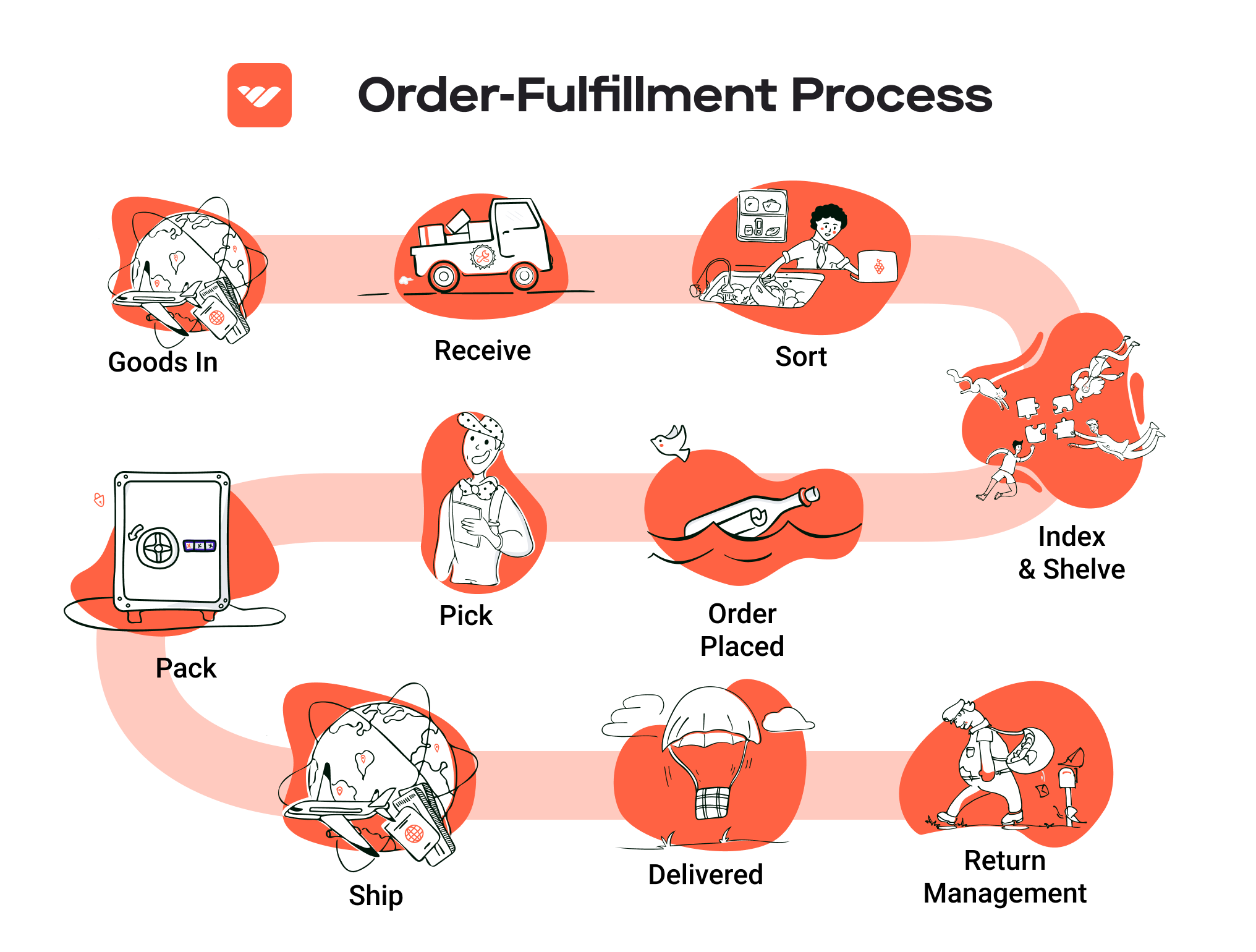
Cons of Using FBA
High Fees
While FBA offers many advantages, it comes at a cost. Sellers must pay various fees, including storage fees for inventory held in Amazon’s warehouses and fulfillment fees for each order shipped. For low-margin products, these fees can significantly eat into profits.
Strict Inventory Rules
Amazon has stringent requirements for how products must be packaged and labeled before they can be sent to fulfillment centers. Sellers need to be meticulous in adhering to these rules to avoid penalties, delays, or even having their inventory rejected.
Commingling Risks
When products are commingled, it means that inventory from different sellers is stored together. This can pose risks for sellers, particularly if a product is defective or returns come from different sellers. Sellers may find themselves held responsible for issues that are not their fault.
Limited Control
By using FBA, sellers give up a certain degree of control over their inventory management and customer service. If there are issues with fulfillment or customer complaints, sellers may feel powerless to rectify the situation quickly.
Inventory Management Challenges
While FBA simplifies many logistics aspects, managing inventory levels can still be challenging. Sellers need to keep a close eye on stock levels to avoid running out of inventory or incurring high storage fees for excess stock.
Who is FBA Best For?
FBA is particularly well-suited for sellers who:
-
Have High Volume Sales: Businesses that sell products in large quantities can benefit from the economies of scale that FBA provides. The fees become more manageable when spread over a larger volume of sales.
-
Sell Consumer Products: Sellers of fast-moving consumer goods or popular items that are likely to qualify for Prime eligibility can see significant boosts in sales through FBA.
-
Desire to Focus on Core Business Functions: Entrepreneurs who want to concentrate on product development, marketing, and customer engagement rather than logistics will find FBA a valuable ally.
-
Are New to E-Commerce: For new sellers, FBA offers a straightforward entry point into the e-commerce space without the need for complex logistics setups.
-
Want to Expand Reach: Sellers looking to expand their presence on multiple platforms can leverage FBA’s multi-channel fulfillment capabilities to streamline operations.
In conclusion, Fulfillment by Amazon presents a powerful opportunity for e-commerce businesses to scale their operations efficiently. While there are significant benefits to using FBA, sellers must weigh these against the potential downsides, particularly concerning fees and control over their inventory. By understanding both the pros and cons, sellers can make informed decisions that align with their business goals.
Core Services Offered by Fulfillment Centers
Inventory Management & Warehousing
Inventory management and warehousing are foundational services provided by fulfillment centers that involve the systematic control of stock levels and the physical storage of goods. Fulfillment centers like Amazon’s PDX8 utilize advanced technology and automation to monitor inventory in real-time, ensuring that products are available when needed.
Benefits:
1. Enhanced Visibility: Businesses gain access to real-time data regarding their inventory levels, which helps in making informed decisions about restocking and product offerings. This visibility minimizes the risk of stockouts and overstock situations.
2. Space Optimization: With the massive square footage of facilities like PDX8, e-commerce businesses can store a larger variety of products without the overhead costs associated with maintaining their own warehouses.
3. Scalability: As businesses grow, fulfillment centers can easily accommodate increased inventory demands without the need for significant capital investment in additional storage facilities.
Pick and Pack Services
Pick and pack services refer to the process where fulfillment center staff or automated systems select (pick) the right products from inventory and prepare them for shipment (pack). This process is crucial for ensuring that customers receive the correct items in a timely manner.
Benefits:
1. Efficiency and Speed: By leveraging automation, such as the 6,000 robotic units at PDX8, fulfillment centers can significantly speed up the picking and packing process. This leads to faster order fulfillment and improved customer satisfaction due to quicker delivery times.
2. Accuracy: Fulfillment centers implement rigorous quality checks during the pick and pack process to minimize errors. This accuracy reduces the chances of returns and enhances customer trust in the brand.
3. Cost-Effectiveness: Outsourcing pick and pack services allows businesses to reduce labor costs and operational overhead associated with managing in-house fulfillment processes.
Kitting and Assembly
Kitting and assembly involve the grouping of multiple products into a single package or preparing products for sale by assembling them into a final product. This service is particularly valuable for businesses that offer bundled products or require custom configurations.
Benefits:
1. Customized Offerings: Kitting allows e-commerce businesses to create unique product bundles that can attract customers and enhance sales. For example, a seller can offer a bundled deal that includes related products, increasing the average order value.
2. Reduced Time to Market: By utilizing fulfillment centers for kitting and assembly, businesses can accelerate their time to market for new product offerings. This agility is crucial in competitive e-commerce environments where speed is essential.
3. Simplified Logistics: With kitting and assembly handled by a third-party provider, businesses can streamline their logistics operations. This means less complexity in inventory management and fewer moving parts to coordinate.
Returns Management (Reverse Logistics)
Returns management, or reverse logistics, is the process of handling returned products efficiently and effectively. Fulfillment centers play a pivotal role in managing returns, ensuring that products are processed quickly and accurately.
Benefits:
1. Streamlined Processing: Fulfillment centers have established processes for inspecting, restocking, or disposing of returned items. This efficiency minimizes the time and costs associated with returns, allowing businesses to focus on growth rather than logistics.
2. Customer Satisfaction: A smooth returns process enhances customer experience, as it provides a hassle-free way for customers to return products. Satisfied customers are more likely to become repeat buyers, which is essential for long-term business success.
3. Data Insights: Fulfillment centers can provide valuable data on return reasons and trends, allowing businesses to identify product issues or areas for improvement. This insight can inform product development and inventory decisions, ultimately reducing return rates.
In conclusion, partnering with a fulfillment center like PDX8 offers e-commerce businesses a suite of core services that can significantly enhance operational efficiency, customer satisfaction, and scalability. By leveraging advanced technology and expertise in logistics, businesses can focus on their core competencies while ensuring that their fulfillment processes are handled with precision and care.
How to Choose a Fulfillment Partner: A 6-Point Checklist
Location & Warehouse Network
Importance: The geographical location of your fulfillment partner is crucial for efficient shipping and delivery times. A partner with warehouses located near major transportation hubs or your customer base can significantly reduce shipping costs and improve service speed.
Questions to Ask:
– Where are your warehouses located, and what is your distribution network like?
– How do your locations align with my target market?
– Can you provide details on your shipping capabilities and carriers used?
– What is your average shipping time to various regions?
Technology & Integrations
Importance: In today’s digital landscape, a fulfillment partner must utilize advanced technology to streamline operations. This includes inventory management systems, order processing software, and integration capabilities with e-commerce platforms like Amazon, Shopify, or WooCommerce.
Questions to Ask:
– What technology platforms do you use for inventory and order management?
– Can your systems integrate seamlessly with my current e-commerce platforms?
– How do you handle real-time inventory updates and order tracking?
– What measures are in place to ensure data security and compliance?
Specializations (e.g., cold storage, oversized items)
Importance: Depending on your product line, you may require specialized handling, such as cold storage for perishables or facilities capable of managing oversized items. Choosing a partner with the right specializations can prevent costly mishaps and ensure compliance with industry regulations.
Questions to Ask:
– What specializations do you offer that align with my product needs?
– Can you handle the specific requirements for my product types (e.g., temperature control, fragile items)?
– What certifications or compliance measures do you have in place for specialized storage?
– How do you manage inventory turnover for specialized items?
Scalability & Capacity
Importance: As your business grows, your fulfillment needs will change. A capable partner should be able to scale operations without compromising service quality. This includes having the infrastructure and resources to handle fluctuations in order volume.
Questions to Ask:
– How do you manage seasonal demand fluctuations?
– What is your maximum capacity, and how quickly can you scale up operations if needed?
– Can you provide examples of how you’ve successfully scaled for other clients?
– What is your approach to managing overflow inventory or peak seasons?
Pricing and Contracts
Importance: Understanding the cost structure of your fulfillment partner is essential for maintaining profitability. Transparent pricing models will help you anticipate expenses and avoid unexpected fees. Additionally, scrutinizing contract terms will protect your interests.
Questions to Ask:
– What is your pricing structure, and what factors influence costs?
– Are there any additional fees (e.g., storage, pick and pack, returns)?
– Can you provide a detailed breakdown of all charges?
– What are the terms for contract termination or renewal?
Customer Support & Reviews
Importance: Reliable customer support is critical for resolving issues quickly and efficiently. A responsive partner can help mitigate disruptions in your supply chain. Furthermore, checking reviews and testimonials can provide insight into the partner’s reputation and service quality.
Questions to Ask:
– What customer support options do you provide (e.g., phone, email, chat)?
– What are your typical response times for support inquiries?
– Can you share case studies or testimonials from other clients?
– How do you handle disputes or service issues?
Conclusion
Choosing the right fulfillment partner is a pivotal decision that can impact your e-commerce operations and overall customer satisfaction. By carefully evaluating potential partners against this checklist, you can ensure that you select a fulfillment solution that aligns with your business goals, enhances your operational efficiency, and supports your growth trajectory.
Understanding Fulfillment Pricing: A Breakdown of Common Fees
Initial Setup Fees
When you begin using a fulfillment service, you may encounter initial setup fees. These are one-time charges that cover the cost of onboarding your account, which can include system integration, account setup, and initial consultations. The setup process may involve configuring your inventory system, integrating your e-commerce platforms, and training your team on the new processes.
The calculation of initial setup fees can vary widely depending on the complexity of your operations and the fulfillment provider’s pricing model. Some providers may offer a flat fee, while others may charge based on the number of SKUs you plan to manage or the level of customization required for your setup. Be sure to inquire about what is included in these fees and whether any additional costs might arise during the onboarding process.
Receiving Fees
Receiving fees are charged when your inventory arrives at the fulfillment center. These fees cover the labor and resources needed to unload, inspect, and enter your products into the warehouse management system. This process is crucial for ensuring that your inventory is accurately accounted for and ready for storage or fulfillment.
Typically, receiving fees are calculated per pallet or per item, depending on the fulfillment center’s pricing structure. For example, some providers may charge a flat fee for each pallet received, while others may have a tiered pricing model based on the total number of items. It’s important to clarify whether the fee includes inspection services or if additional charges apply for handling damaged or mislabeled items.
Storage Fees (per pallet/bin)
Once your products are stored in the fulfillment center, storage fees come into play. These fees are charged for the space your inventory occupies and are usually calculated based on the volume of storage utilized, often measured in pallets or bins. The more space your inventory requires, the higher the storage fees will be.
Storage fees can vary depending on the time of year as well; many fulfillment centers implement peak season pricing during busy periods, such as holidays, which can lead to increased costs. Additionally, some providers may have a minimum storage duration policy, charging fees even for short-term storage. It’s advisable to estimate your inventory turnover rates to gauge potential storage costs accurately.
Pick & Pack Fees (per item/order)
Pick and pack fees are charged each time an order is fulfilled. This fee covers the process of retrieving items from storage (picking) and packaging them for shipment (packing). The fee structure can vary widely, with some fulfillment centers charging per item picked, while others may charge a flat rate per order regardless of the number of items.
Understanding how pick and pack fees are calculated is crucial for budgeting purposes, especially if your business model involves a high volume of small orders versus fewer large orders. Be sure to ask about any additional costs that may apply for special packaging requirements or for including marketing materials in shipments.
Shipping Fees
Shipping fees are one of the most significant costs associated with fulfillment services. These fees cover the transportation of your products from the fulfillment center to your customers and can vary based on several factors, including shipping method (standard, expedited, etc.), destination, package size, and weight.
Many fulfillment centers offer negotiated shipping rates with carriers, which can sometimes lead to lower costs for you. Understanding the shipping options available and their associated fees is critical for optimizing your logistics strategy. Additionally, consider how shipping fees may be impacted by seasonal demand or changes in carrier rates.
Tips for Getting an Accurate Quote
-
Provide Detailed Information: When seeking quotes from fulfillment centers, provide as much detail as possible about your inventory, order volume, and specific needs. This will help providers give you a more accurate estimate.
-
Ask About Hidden Fees: Inquire about any additional fees that may not be included in the initial quote, such as charges for returns, special handling, or storage overage fees.
-
Compare Multiple Quotes: Don’t settle for the first quote you receive. Compare several providers to understand the range of pricing and services available.
-
Evaluate the Total Cost of Ownership: Beyond just the fulfillment fees, consider how the provider’s services will impact your overall operational efficiency, customer satisfaction, and potential return on investment.
-
Clarify Terms and Conditions: Ensure you fully understand the terms associated with the quoted fees, including any minimum commitments or contract lengths.
By being thorough in your inquiries and evaluations, you can make a more informed decision that aligns with your business goals while effectively managing fulfillment costs.
Frequently Asked Questions (FAQs) about Fulfillment
1. What is the Amazon Fulfillment Center PDX8?
Amazon Fulfillment Center PDX8 is a state-of-the-art facility located in Woodburn, Oregon, covering approximately 3.8 million square feet. It is designed to enhance Amazon’s logistics operations on the West Coast, featuring advanced robotics and the capacity to store up to 40 million products, thereby improving delivery speed and efficiency for sellers and customers alike.
2. How does PDX8 impact delivery times for sellers?
With its strategic location and advanced technology, PDX8 significantly reduces delivery times across the western United States. Sellers utilizing this fulfillment center can expect faster shipping to customers, which can enhance customer satisfaction and lead to better reviews and repeat business.
3. What are the advantages of using PDX8 for my e-commerce business?
Utilizing PDX8 provides several advantages, including:
– Faster Delivery: Improved logistics mean quicker shipping times to customers.
– Increased Capacity: The facility’s large storage capacity can help alleviate stock limitations.
– Enhanced Trust: Faster fulfillment can lead to better customer experiences and reviews.
– Scalability: The facility’s automation allows for handling high volumes of orders efficiently.
4. What is the difference between a warehouse and a fulfillment center?
A warehouse is primarily used for storage of goods, while a fulfillment center is specifically designed to process and ship orders. Fulfillment centers often integrate advanced technology and logistics services, such as picking, packing, and shipping, to streamline the order fulfillment process for e-commerce businesses.
5. How much do fulfillment services cost at PDX8?
Costs for fulfillment services can vary widely depending on factors such as the volume of inventory, specific services required (like kitting, bundling, or labeling), and shipping destinations. Sellers are encouraged to review Amazon’s FBA pricing structure or consult with third-party logistics providers to get a clearer estimate tailored to their business needs.
6. What is a 3PL (Third-Party Logistics) provider?
A 3PL provider is a company that offers outsourced logistics services, including warehousing, fulfillment, and distribution. For e-commerce businesses, partnering with a 3PL can streamline operations, reduce overhead costs, and improve order accuracy, allowing sellers to focus on growth and customer engagement.
7. What types of products are best suited for fulfillment at PDX8?
PDX8 is equipped to handle a wide range of products, from consumer electronics to household goods. However, products that are lightweight, high in demand, and have a quick turnover rate tend to perform best in fulfillment centers. Sellers should also ensure compliance with Amazon’s guidelines to avoid delays.
8. What are the requirements for sending inventory to PDX8?
Sellers must ensure that their inventory meets Amazon’s FBA prep requirements, which include proper labeling, packaging, and compliance with FBA policies. Inventory must arrive at PDX8 fully prepared; otherwise, it may be rejected or incur penalties, affecting delivery timelines.
9. How can I optimize my inventory management with PDX8?
To optimize inventory management with PDX8, sellers should:
– Monitor Inventory Levels: Use Amazon’s inventory management tools to track stock levels and forecast demand.
– Stay Compliant: Ensure all products are prepped according to Amazon’s guidelines to prevent delays.
– Utilize Automation: Leverage the advanced technology and analytics provided by PDX8 to improve order accuracy and efficiency.
10. What should I consider when choosing a fulfillment strategy involving PDX8?
When choosing a fulfillment strategy involving PDX8, consider the following:
– Product Type and Volume: Assess how your product characteristics align with PDX8’s capabilities.
– Shipping Needs: Evaluate your target markets and how PDX8 can meet your shipping timelines.
– Cost Structure: Understand the fees associated with using PDX8 and how they fit into your overall budget.
– Partnerships: Consider collaborating with a reliable 3PL for pre-fulfillment services to streamline your operations before sending inventory to PDX8.
Conclusion: Is Outsourcing Fulfillment the Right Move for Your Business?
Understanding the Value of Outsourcing Fulfillment
Outsourcing your fulfillment processes can be a transformative decision for your e-commerce business. By leveraging the capabilities of a fulfillment partner, you can save valuable time, allowing you to focus on growth strategies and customer engagement rather than the intricacies of logistics. A dedicated fulfillment service can handle the complexities of inventory management, packing, and shipping, enabling you to streamline operations and reduce overhead costs.
Scalability for Future Growth
As your business scales, so do your logistics needs. A fulfillment partner can provide the infrastructure necessary to accommodate increased order volumes without the burden of expanding your own facilities or workforce. This scalability is crucial, especially in a competitive environment where customer expectations for fast delivery are constantly rising. With advanced fulfillment centers like Amazon’s PDX8, which utilizes cutting-edge automation, you can ensure that your products reach customers quickly and efficiently, enhancing your brand’s reputation.
Expertise and Compliance
Navigating the compliance requirements of platforms like Amazon can be daunting. A specialized fulfillment partner brings valuable expertise in these areas, ensuring that your inventory meets all necessary guidelines, from accurate labeling to proper packaging. This reduces the risk of costly errors and delays, allowing your business to operate smoothly in a complex marketplace.
Choosing the Right Partner
However, the benefits of outsourcing fulfillment are only realized when you choose the right partner. Look for a provider that aligns with your business goals, offers flexibility, and understands the specific demands of your market.
Next Steps for Your Business
Take a moment to audit your current shipping and fulfillment processes. Are you experiencing delays, increased costs, or customer dissatisfaction? Assessing these areas can help determine if a fulfillment partner is the right next step for your business. Consider reaching out to potential partners to explore how they can support your growth and streamline your operations. Your choice today could pave the way for success tomorrow.
Important Disclaimer
⚠️ Important Disclaimer
The information in this guide is for educational purposes. Fulfillment services, pricing, and platform features change frequently. Always conduct your own due diligence and consult with providers directly before making business decisions.
